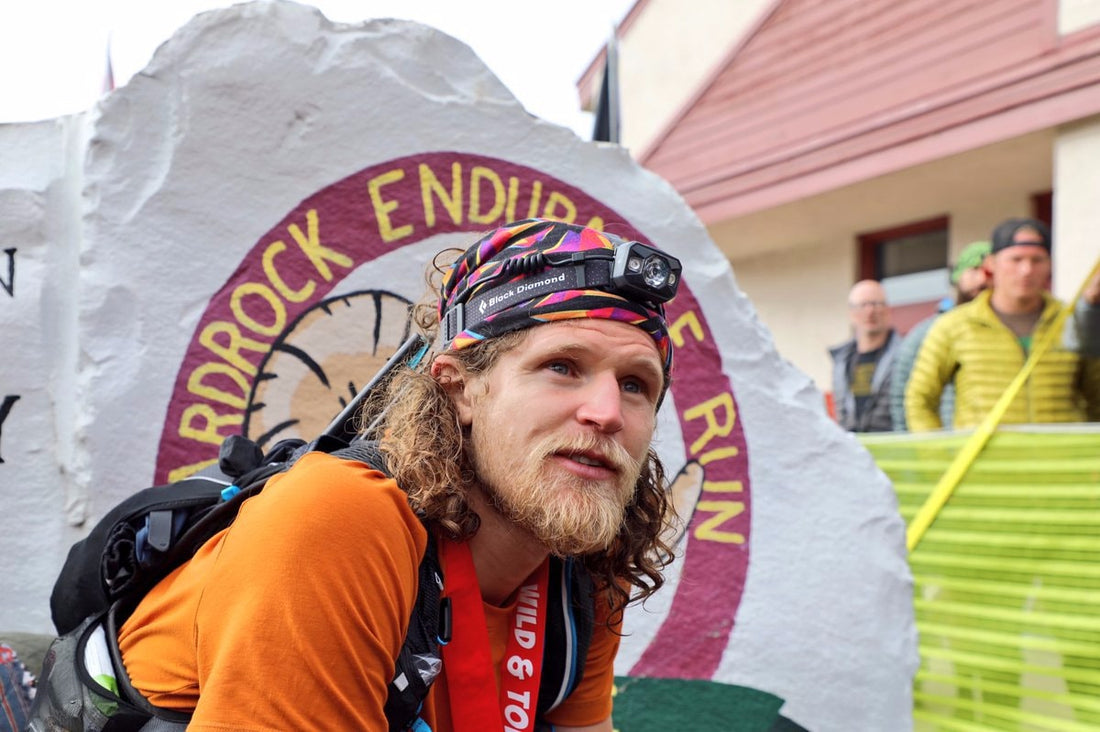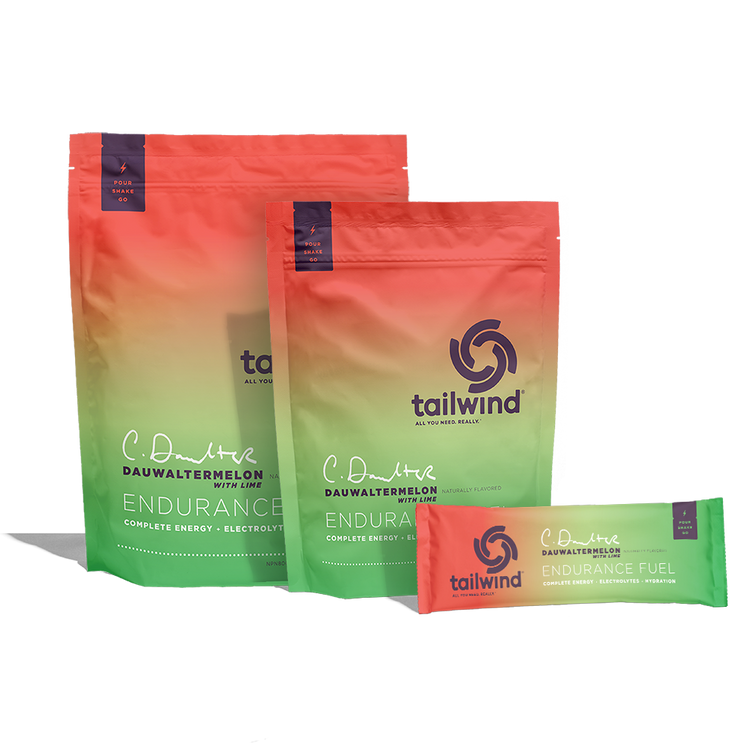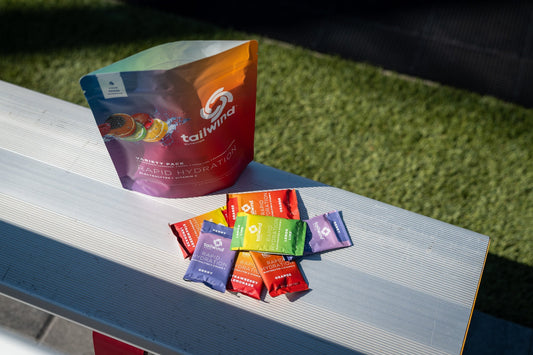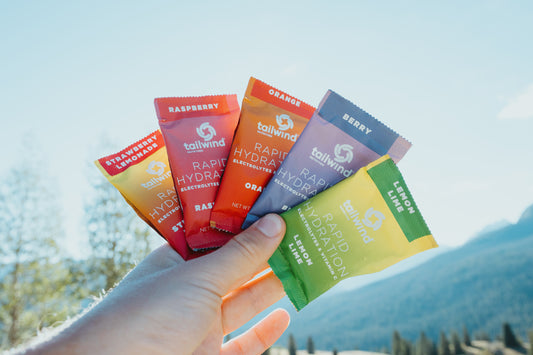Fueling at High Altitude
0 Comments
With the Leadville 100 races on the horizon, we thought we’d give our Tailwind community some pointers for high altitude fueling. “The Race Across the Sky” pushes the body to the extreme for 100 grueling miles at 9,100 - 12,600 feet. To put this in perspective, the highest mountain passes at the UTMB and Tour de France just barely hit 8,000-9,000 feet above sea level. At this high elevation, three things need to be taken into consideration: lack of oxygen, hydration, and digestive issues. In this unforgiving environment, issues in any of these three areas can quickly lead to problems for an athlete so we need to be prepared.
Oxygen
There is a common misperception that there is less oxygen at high altitude. This is not technically true. The same 21% percent of oxygen is in the air at the 12,000 foot summit of Columbine Mine (Leadville 100) as at sea level; what is different is the barometric pressure (PB). The PB at sea level is 760 mmHg and at 10,000 feet it is 534 mmHg - so there is 21% of a smaller number as one goes higher. Put another way, when pressure decreases gas molecules expand and take up more space within a given area. The result is that for a given volume of air there are less total oxygen molecules present.
In addition, the reduced atmospheric pressure at altitude reduces the driving pressure for oxygen to enter the lungs. Oxygen enters the body and the cells through partial pressure gradients. The lower partial pressure exerted at altitude makes it harder for the body to consume and use oxygen. This produces hypoxia, where our blood carries a lower level of oxygen than normal. The body compensates by increasing our heart and breathing rates to try and absorb more oxygen and deliver it to our muscles. Plus, hormonal changes occur, like the pumping of adrenaline to help with oxygen transportation and delivery.
The only cure for these dramatic changes is time. We need time to let our body adjust, or acclimate, and increase the number of oxygen-carrying red blood cells that improve our ability to deliver oxygen to the brain and working muscles. Most adaptations occur within two days to two weeks of exposure to altitude. During this time the amount of oxygen that the body can consume and utilize is reduced and endurance performance may be impaired. So aim to get to the race location a week in advance and stay active — which accelerates the acclimation process. Don’t, however, workout at your full intensity. Instead, take the first day or two off, and if you aren’t experiencing symptoms of acute mountain sickness, gradually start training.
Hydration
High altitude presents the perfect storm for dehydration. The air at high elevation is very dry, so sweat evaporates quickly and we experience increased evaporative losses from our lungs. High altitude also causes an increase in urination. As if that wasn’t bad enough, we lose the sensation of thirst at higher elevations since lower temperatures suppress thirst even when the body needs fluids.
The obvious conclusion is that proper hydration is of the utmost importance while training or racing at high altitude. Athletes can lose as much as 12 liters of sweat in a 100-mile race! It is equally important, however, to get adequate electrolytes and glucose in our fuel to ensure the proper absorption of liquid. Tailwind does just that. It keeps you hydrated and provides the optimum ratio of sodium and glucose to keep our inner hydration pumps working at their peak.
GI Distress
Your digestive tract gets compromised at altitude. Period. Symptoms like nausea and vomiting are common signs of altitude sickness and are seen in 81.4% of short-term visitors. At high elevations, the body is working on overdrive so it suppresses the digestive system in favor of increasing its cardiopulmonary reserves. In other words, the heart beats faster and non-essential bodily functions are repressed, resulting in a decline in food digestion efficiency. Tailwind’s use of glucose as its primary fuel source makes it easy to absorb since it doesn’t need digestion to get transported into our blood. By literally bypassing the need for digestion, Tailwind is the fuel that is easiest on the GI tract.
Strategies at High Altitude
It is important to have a solid game plan for race day. Here are some important strategies to keep in mind:
- Stay hydrated with a target of 20-24 ounces of water per hour. Most GI problems stem from the fact that you get dehydrated. If you are taking gels, don’t forget to drink – this is a fairly common problem since gels are somewhat viscous.
- Carbs, like glucose, are the body’s fuel of choice at high altitude because carbs can supply 15 percent more energy for the same amount of oxygen in comparison to fats.
- Don’t overload the gut with too many calories. Aim for 200-300 calories/hour.
- Have your crew monitor your intake of calories and fluids.
- Avoid drinks or foods that are high in protein. Although protein is important for recovery and as part of your overall diet, it is too hard on the digestive tract during a high altitude race.
- Don’t go too hard. At altitude where your GI system is already compromised working too hard can just stress it more. Instead, strive to maintain a nice achievable pace.
Tailwind’s revolutionary fuel will keep you hydrated and powered-up with minimal digestive stress, and help you get to the finish line - even in the infamous “Race Across the Sky.”






